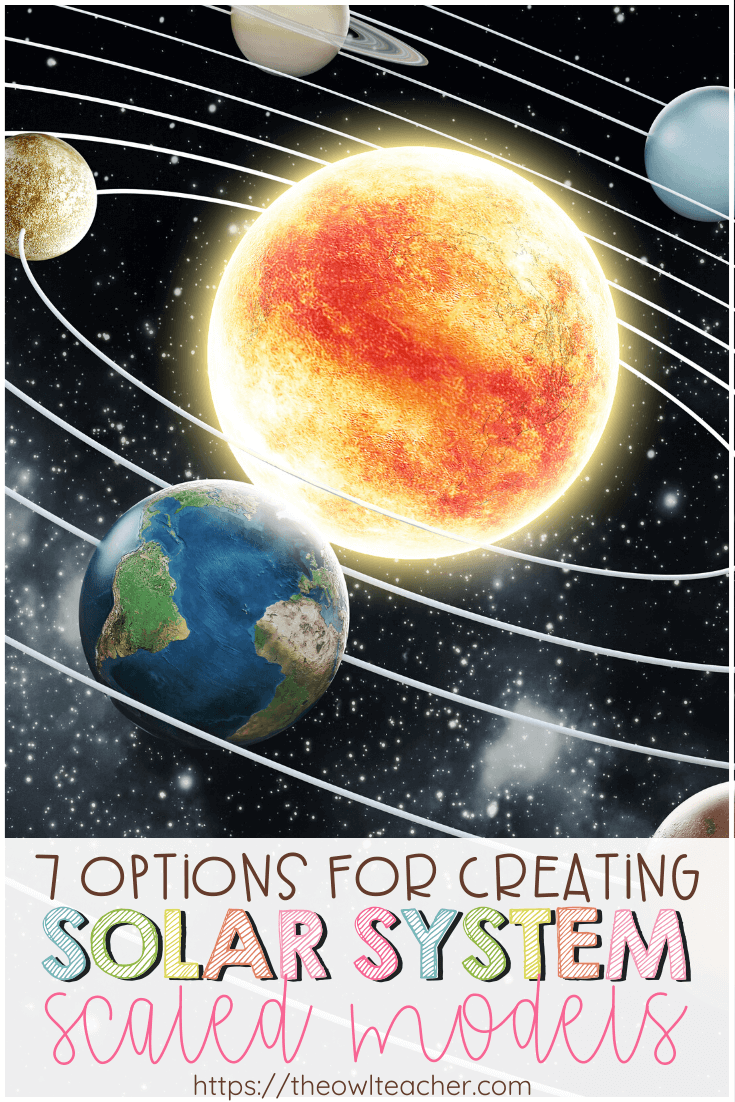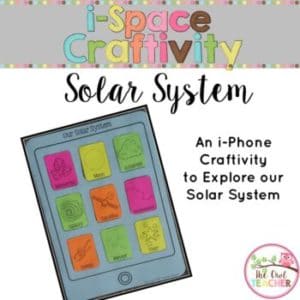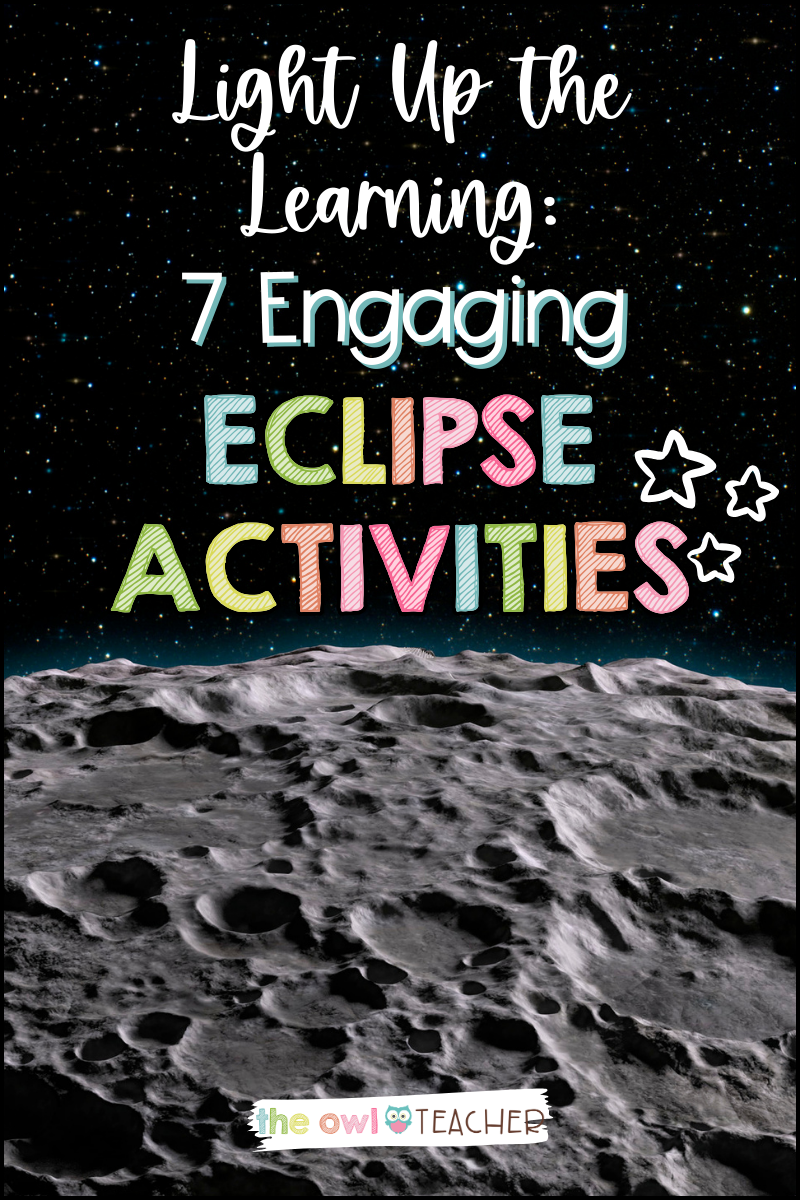

In the event you educate the photo voltaic system, sooner or later, you and your college students will seemingly need to create a scale mannequin too. This undertaking doesn’t need to be dreaded nor does it need to be totally instructor dependent. There are various choices with regards to creating this photo voltaic system scale mannequin and that’s what this put up is about as we speak.

Choices for Creating the Photo voltaic System Scale Mannequin
Earlier than you get began with fashions within the classroom, take into account asking your college students these questions:
- “What makes one thing a mannequin?”
- “How are the fashions used?”
- “Why are the fashions used?”
Then take into account having college students create their very own scaled fashions first as a strategy to predict the scale and distance. This can make the affect a lot better afterward. After creating fashions (such because the choices under), give pictures of the photo voltaic system and focus on why they’re inaccurate fashions.
These choices are in no specific order and also you should not have to make use of only one. In truth, creating a number of fashions will assist college students comprehend extra.
1.) If the Moon Had been Solely a Pixel Web site. I completely love this web site. Simply by merely scrolling this web site to the appropriate your college students can see how far-off every little thing is in area and their relative sizes. The creator of this web site features a little humor as you’re scrolling by his web site. It’s positively definitely worth the go to! You’ll be able to go to the If the Moon Had been Solely a Pixel Web site right here.

2.) Use Cheerios Cereal for Planet Dimension. Present college students with a chart that tells them the diameter of every planet. Then, clarify the size – that 1 inch = 1 km. With this mentioned, 1 piece of Cheerios Cereal will equal 1/2 inch or 1/2 km. Focus on what number of items would they should signify Mercury? Then, change the size to the place 1 piece of Cheerios Cereal represents the diameter of Mercury and ask what number of items can be wanted to signify the diameter of the Earth? (About 2 1/2 items). Which means that now the size is 1/2 inch =4,879 km (or spherical as much as 4,900 if simpler to your college students). Then present college students with a bag of cheerios, a calculator (if they will’t divide giant numbers but), markers, glue, and paper. Have college students glue their Cheerio “planets” diameters on the paper you select and label them. You’ll be able to have college students place them within the order of the planets, from best to smallest in diameter or vice versa. When college students are completed, to put it in a bit extra perspective, it will take 285 Cheerios to make the solar’s diameter.
- Mercury – 4,879 km (1 Cheerio)
- Venus – 12,104 km (2 Cheerios)
- Earth – 12,742 km (2 1/2 Cheerios)
- Mars – 6,779 km (1 Cheerio)
- Jupiter – 139,820 km (28 1/2 Cheerios)
- Saturn – 116, 460 km (24 Cheerios)
- Uranus – 50,724 km (10 Cheerios)
- Neptune – 49,244 km (10 Cheerios)
- Solar – 1.391 Million km (285 Cheerios)
3.) Nationwide Geographic Video. On this video, a bunch of buddies works collectively to create a scale mannequin in 7 miles of the desert. It actually helps present a visible of the gap between planets and their sizes compared to each other. The clip is comparatively quick (7 minutes) and can be a good way to introduce the subject to college students. (You may as well discover the video right here.)
4.) Astronomical Items with Kitchen Objects. Sure, we’ve seen almost the entire completely different photo voltaic system scale fashions we will make out of our home goods, however this one makes use of astronomical models and is for group creation. Present every group with 2 poppy seeds, 1 medium grape, 2 mustard seeds, 2 peppercorns, 1 M&M (or Skittle), index playing cards, a calculator, a metric ruler, and including machine tape (or not less than 40 cm strip of paper).
Utilizing your including machine tape paper, have your college students draw a line phase that’s 40 cm lengthy. Then have them mark every cm on the paper, for a complete of 40 marks. At first mark, they are going to label it the solar. Then utilizing the size that 1 cm = 1 AU, have college students work collectively to plot and label factors alongside the road phase to signify every planet’s relative distance from the solar. If desired, you may have them use millimeter marks on their ruler to indicate the tenths of models. After plotting and labeling every planet’s distance from the solar, have college students tape or glue down the mannequin to its corresponding level.
- Mercury – 0.4 AU – at 4 mm mark – poppy seed
- Venus – 0.7 AU – at 7 mm mark – mustard seed
- Earth – 1 AU – at 1 cm mark – mustard seed
- Mars – 1.5 AU – at 1.5 cm mark – poppy seed
- Jupiter – 5.2 AU – at 5.2 cm mark – medium grape
- Saturn – 9.6 AU – at 9.6 cm mark – M&M/Skittle
- Uranus – 19.2 AU – at 19.2 cm mark – peppercorn
- Neptune – 30.1 AU – at 30.1 cm mark – peppercorn
(If desired, you may have college students decide the AU of planets by understanding their distance from the solar and dividing that by Earth’s distance from the solar. Then college students spherical to the closest tenth. To seek out which mannequin represents which planet, take the diameter of every planet in km and alter the size to mm after which use that to estimate which mannequin is closest to that scale measurement. Moreover, if you happen to needed to incorporate the solar on this mannequin, you’d want a basketball.)
5.) Create a Hallway Show. This photo voltaic system scale mannequin can educate others in your faculty too! Discover 16 toes of hallway area in your faculty the place you and your college students can create a photo voltaic system show. Create a two toes large solar out of yellow butcher paper to signify half of the solar. Tape the solar to the left hand, cleared wall area. Subsequent reduce out circles to signify the planets. (Mercury 3/8 inch, Venus 7/8 inch, Earth 1 inch, Mars 9/16 inch, Jupiter 11 inches, Saturn 10 inches, Uranus 4 inches, Neptune 3 3/4 inches). Then, place the planets away from the solar in these distances:
- Mercury – 2 inches
- Venus – 3 inches
- Earth – 4 inches
- Mars – 6 inches
- Jupiter – 1 foot, 9 inches
- Saturn – 3 toes, 2 inches
- Uranus – 6 toes, 5 inches
- Neptune – 10 toes, 1 inch
Break college students up into teams and assign them a planet. Have them analysis details about that planet and write attention-grabbing details on index playing cards. One card may state the scale of the planet (diameter) and the gap from the solar (precise distance, not scaled). Tape these playing cards beneath every planet. As your college students be taught new details about every planet, they will add to their show. What’s much more thrilling is that on the finish of your unit, college students have a whole wall to review!
6.) Orbital Paths with String. Outdoors on a basketball court docket or comparable space, use a chunk of chalk to attract a circle and label it the solar. Then have a scholar stand on this space to signify it. Subsequent, take a chunk of string that’s about 1.2 m (or 3 toes, 11 inches) in size and tie a chunk of chalk to it. The scholar who’s the solar will maintain one finish of the string whereas one other will pull the string out at its full distance to create a circle representing the orbit of Mercury. Have a scholar label this orbit and stand there to signify this planet. Proceed doing this utilizing different strings (you received’t be capable to do the outer planets, however you may have your college students determine them out utilizing the components of taking the astronomical models of a planet (see above) and multiplying it by 3 meters, [10 feet]):
- Mercury – 1.2 m (3 toes, 11 inches)
- Venus – 2.2 m (7 toes, 2 inches)
- Earth – 3.0 m (10 toes, 0 inches)
- Mars – 4.6 m (15 toes, 2 inches)
- Jupiter – 15.6 m (51 toes, 2 inches)
- Saturn – 28.6 m (93 toes, 10 inches)
- Uranus – 57.6 m (189 toes)
- Neptune – 90.3 m (296 toes, 3 inches)
7.) Rest room Paper. On this web site proper right here, you may see how they took rest room paper sheets to create a photo voltaic system scaled mannequin. It walks you thru step-by-step what you must do too.
 Credit score: At House Astronomy
Credit score: At House Astronomy
Photo voltaic System Calculator Assets
In the event you want a photo voltaic system scale mannequin calculator that can assist you as you’re engaged on these actions together with your class, I’ve obtained you lined. Yow will discover one by Assume Zone that additionally helps you create a map or this useful resource, Construct a Photo voltaic System Mannequin, that accommodates not solely a calculator however plenty of different nice sources that can assist you too! You’ll positively need to verify each of these sources out.
In the event you’re searching for different nice photo voltaic system sources to complement your photo voltaic system unit, take a look at my photo voltaic system sources on Academics Pay Academics right here.

Associated Merchandise it’s possible you’ll get pleasure from!
-
 Photo voltaic System Accordion Booklet $4.25 Add to cart
Photo voltaic System Accordion Booklet $4.25 Add to cart -
 Photo voltaic System Craftivity (iSpace) $3.25 Add to cart
Photo voltaic System Craftivity (iSpace) $3.25 Add to cart - Photo voltaic Programs and Planets | Circle Guide Craftivity Printable & Digital (Google) $3.25 Add to cart

















